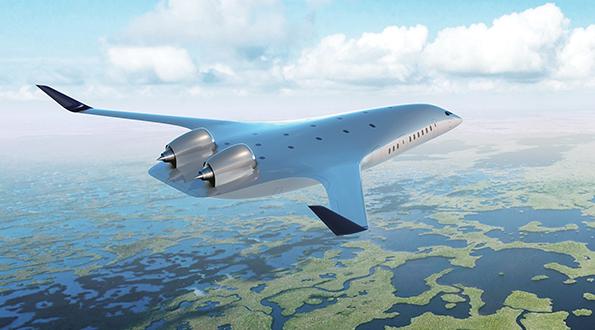
These are exciting times for new jetliner concepts. JetZero’s blended wing body, Ron Epstein’s high-wing/propfan jetliner and others offer hope to airlines struggling with high fuel prices. The prospect of a new jetliner also offers hope to Boeing, which is losing market share to Airbus’ conventional, last-generation A321neo and, as Epstein points out, badly needs to revive its engineering core.
Despite this, Boeing CEO David Calhoun, among others, continues to deny that there is a business case for a new jet. One reason he cites is that there are game-changing new technologies coming that could make a jet launched today obsolete after a few years. History, however, shows us four principles indicating why that is unlikely:
- Aviation technology is seldom game-changing. This is an industry based on incrementalism. Consider the high-bypass turbofan, debuting as the Pratt & Whitney JT9D on Boeing’s 747 in 1969. It offered impressive efficiency improvements, and all commercial engines today are high-bypass, but it took decades to extinguish lower-bypass types. The last low-bypass JT8D was delivered in 1999 on an MD-80. And the last Boeing 707, which the new widebodies and their high-bypass engines should have made obsolete, was delivered 13 years after the 747 entered service.
Exciting new technologies take longer to arrive than expected. The idea of a commercial geared turbofan was mooted in the 1970s or before. International Aero Engines proposed its SuperFan in the mid-1980s, but a geared commercial fan didn’t enter service until 2016, as Pratt & Whitney’s PurePower PW1000 series. Similarly, the propfans on Epstein’s jetliner are based on technologies envisioned over 50 years ago and first flown (as the GE36 and Pratt/Allison 578-DX) 35 years ago.
Some regard hydrogen and other alternative propulsion as promising, but many experts point to serious technical challenges. These enormous challenges may or may not be surmountable, but to regard a hydrogen-powered jetliner as a disruptive possibility for another 20-30 years completely ignores the history of technology maturation.
There is very little record of new product failure due to disruption by novel technology. Failures such as the Bristol Brabazon, Concorde or Airbus A380 resulted from misunderstandings of market requirements, a kind of magical thinking about what airlines and the public want, not new technology.
It is true that in the 1950s, numerous piston and turboprop airliners were launched, and some failed due to the advent of jets. But this was the result of cheap fuel enabling a more expensive path (jets). Today, it is a reasonable bet that fuel will not be cheap, and passengers will stay cost-sensitive.
- The most promising new technologies on the drawing board—such as autonomy and sustainable aviation fuel—are retrofittable or applicable to current platforms. A new jetliner designed today can easily anticipate any requirements these technologies might have.
The military side of the industry illustrates these principles well. The U.S. Air Force has been buying fifth-generation fighters since the Lockheed Martin F-22, but per Principle 1, it is also procuring upgraded fourth-generation aircraft such as the Boeing F-15EX because they are still effective for certain missions. Meanwhile, per Principle 2, concepts such as directed-energy weapons or hypersonic propulsion have been around for decades but are unlikely to revolutionize combat aircraft any time soon. Per Principle 4, many technologies on the drawing board can be spiraled in or retrofitted to modern combat aircraft.
Most of all, militaries know that forgoing the fielding new weapons and technologies today in favor of waiting for some future “game-changing” weapon can lead to disaster. Imagine if the UK or U.S. had decided in the 1930s to skip the development of high-performance fighters like the Spitfire because jet engines were coming and were likely to make propeller planes obsolete.
Airlines often think the same way as militaries. Not having technology that is equal to their competitors’ means those competitors can outprice and out-profit them on a given route. This is why Calhoun’s insistence that a new jetliner needs to be 20-30% better than current equipment is false. Airline profit margins are tiny, and a 10-15% performance improvement can make all the difference, as with the Boeing 777-200 versus the Airbus A340-300 or McDonnell Douglas MD-11, for example. Also, the new jetliner concepts promise much better improvements than that.
Militaries that ignore these principles risk defeat. A jetliner prime that ignores them can expect defeat, too. For Boeing, being stuck in permanent second place puts it on the path to commercial irrelevance.






Comments